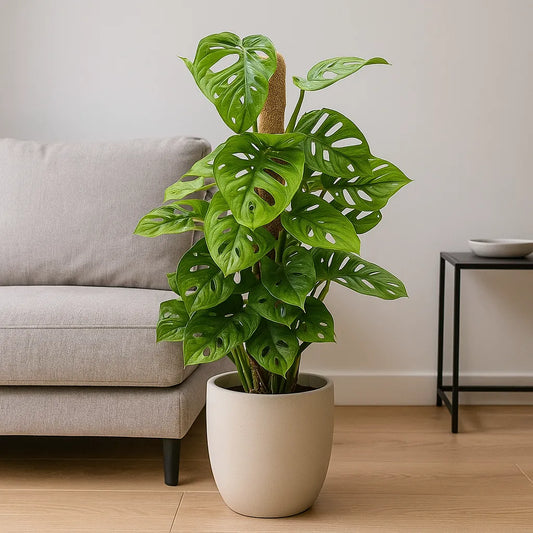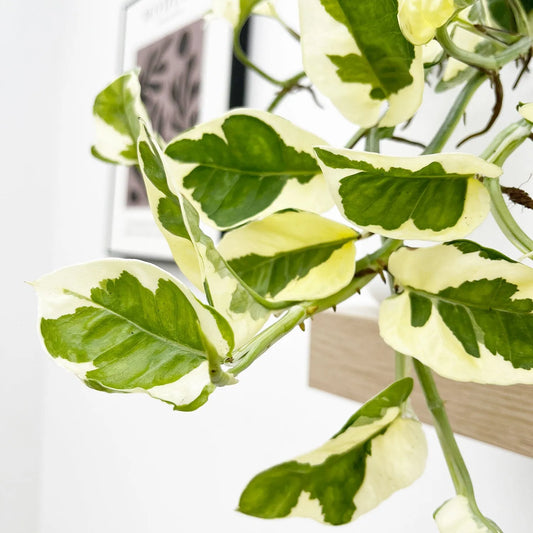Calathea Plant Care
Calatheas are a favourite of houseplant growers and are prized for their beautiful ornamental foliage. The leaves of these plants often look like they have been hand painted and some varieties have intricate patterns that are a piece of artwork themselves. In this guide we will take you through everything you need to know about growing these wonderful plants.
What is a Calathea Plant
The Calathea is a family of flowering plants that is native to to the tropical Americas. There are around 80 recognised varieties of Calathea and there is a lot of variety amongst them. Calathea are more commonly known as ‘Prayer plants’ because at night the leaves will fold together much like hands in prayer.
Light
The Calathea is a tropical houseplant that has adapted to brighter light. To replicate this as closely as possible, you should place your Calathea in a location that receives bright, indirect light throughout the day. Ideally you should choose a room with a west, east or south facing window.
Make sure you do not put your plant directly in front of the window since this light may be too intense and burn the leaves. If you can only put your plant in direct sight of a window make sure the light is filtered by a blind or cover.
Soil
Make sure your plant has a soil that is well draining, but balanced enough to retain enough water to stop the plant drying out. Most potting mixes will do as long as you have a pot with enough drainage holes in it. If you want to make your own potting soil for your plant a commonly used formula is 50% potting soil with 20% orchid bark, 20% charcoal and 10% perlite.
Our Calathea and Maranta Potting Mix provides the perfect mix of soil for your Calathea plants so you don’t have to worry about mixing your own.
Water
How often should you water your Calathea?
Water your calathea little and often to keep the soil moist, but not wet. In between waterings let the top quarter of the soul dry out completely. When you water, only do so until the water begins to seep out of the drainage holes in the pot.
What kind of water should I use to water my Calathea?
The Calathea can be a picky plant when it comes to the type of water you use. Some tap water contains chlorine and fluoride that can build up in the soil and damage the plant. When this happens, the leaves of your Calathea will turn yellow at the edges.
It is easy to stop this happening, if you still want to use tap water make sure you leave it out overnight to let the extra chemicals evaporate. Alternatively you can collect rainwater in a water butt and use that instead. Or you can filter your water with a fridge filter. Once you change your water, remove any discoloured leaves and watch your plant thrive.
Fertiliser
It is best not to overfeed a Calathea plant since the roots can easily be damaged by a buildup of chemicals in the soil. Feed with a well-balanced houseplant feed once a month during the spring and summer. As the weather becomes colder and the days become shorter you should reduce the amount you feed since the plant will begin to slow down its growth.
Humidity
The Calathea has adapted to humid environments, and some plants have even developed aerial roots to draw moisture from the air. This love of a humid environment makes the Calathea an ideal plant for a bathroom or kitchen. To replicate this humidity in a room that isn’t normally so humid you can either mist the leaves often to keep them looking vibrant and colourful. You can also use a pebble tray or place a humidifier in the room.
Temperature
All tropical houseplants need a slightly warmer temperature than some other houseplants. The Calathea is no different, but it is able to adapt to slightly colder conditions. Ideally you should keep your Calathea between 18 and 24 degrees. Keep your plant away from any cold draughts since they can quickly kill your plant. In winter, avoid keeping windows open too long in the room with your plant in.
Pruning
As your Calathea ages it is common for your plant to need pruning. Over time your plant's foliage will begin to yellow and brown. When this happens cut the leaves at the base where it joins the main stalk and remove. Only do this to discoloured leaves as the rest are still healthy.
At some points your Calathea will produce flowers. To keep new blooms appearing throughout the summer, deadhead them as soon as they begin to brown and wilt.










